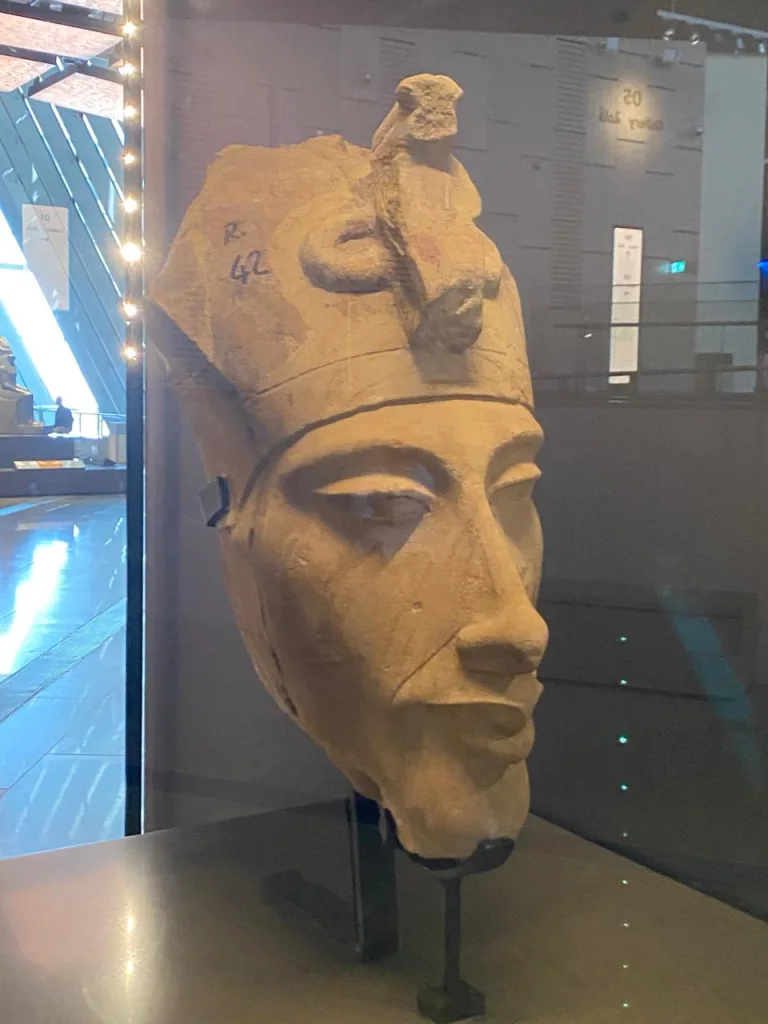Giza
Giza is located on the western bank of the Nile River. Giza was the necropolis of the first capital of Egypt, Memphis; King Men, who united Upper and Lower Egypt, built the Capital of Memphis near the Delta of Egypt. Narmer or Mena united Egypt in 3200 BC.
Giza is an Arabic word which means “the point to cross the River Nile”; when the Arab Muslims came to Egypt in 641 AD, they crossed from the Eastern Bank of the Nile to the Western Bank.
There are many landmarks in Giza
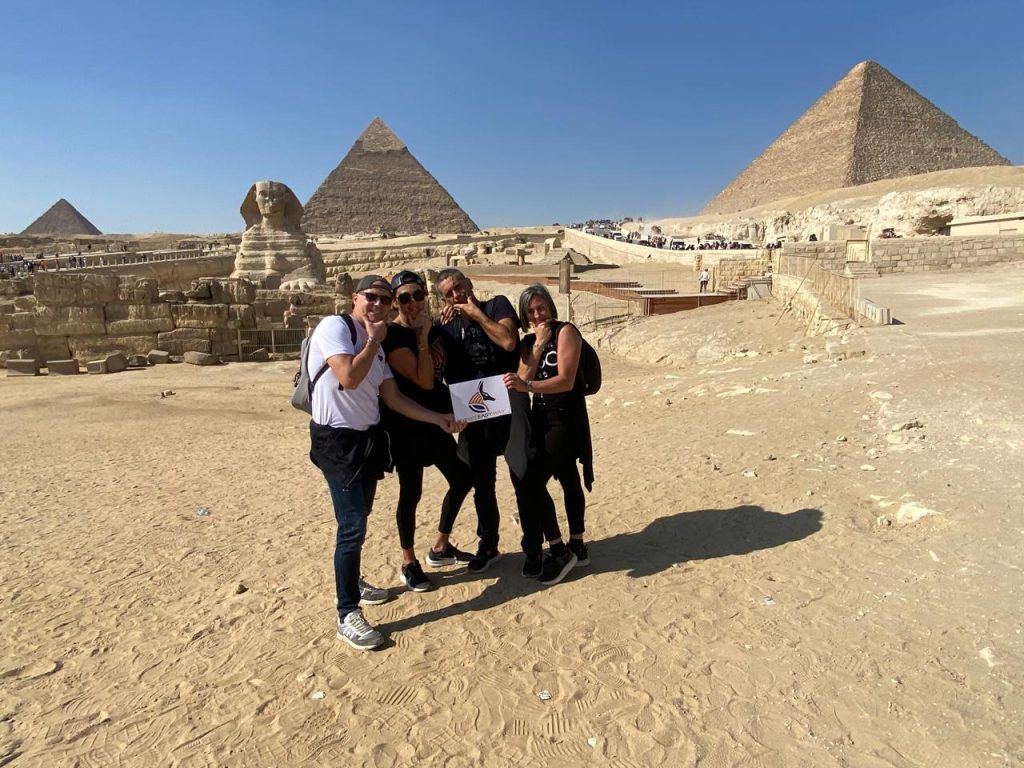
The Giza Pyramids are located 12 km (8 mi) southwest of Cairo.
The three pyramids of Khufu (Greek name: Cheops), Khafre (Chephren), and Menkaure (Mycerinus) dominate the Giza plateau. Surrounding the father-son-grandson trio are smaller pyramids belonging to their female dependents, and the mastabas (large, trapezoid-shaped tombs) of their courtiers and relatives.
The word “Mastaba” comes from the Arabic word for bench, which these tombs resemble in shape, if not in scale, and the mastabas were often painted and decorated with reliefs inside, with the actual burial sites placed in shafts cut into the bedrock.
By the way, in 1954, to the south of the Great Pyramid of Cheops, was discovered his own Royal Boat, which is one of the most extraordinary artifacts of ancient Egypt. The Cheops Royal Boat 43.5 m. length, and it was made from the cedar of Lebanon
Finally, the great Sphinx crouches at the eastern edge of the plateau, guarding the necropolis.

The Great Sphinx. The “enigmatic” Sphinx is attached to Khafre’s pyramid complex, just north of his valley temple, with a separate temple (now very much destroyed) of its own. The Egyptian Sphinx is related to the Greek Sphinx only in that both types are compound animals, part human and part feline. The figure of a recumbent lion with a man’s face wearing the nemes (traditional headdress of the pharaoh), is thought to be Khafre in the guise of Re-Harakhte, a manifestation of the sun god, and, in this case, a guardian of the Giza necropolis
The Sphinx was carved from living rock, with additional details and the final casing made of limestone blocks. The monument used to sport a uraeus (the royal cobra) on its forehead and had a beard that had fallen off, bit by bit, through the ages. It is possible that the entire statue was painted; now only some traces of red ochre remain on the upper part of the cheeks.
The Dream Stela A stela stands between the Sphinx’s paws, erected by Pharaoh Tuthmose IV (1401-1391 BC) to commemorate his coming to the throne and his clearing the Sphinx of encroaching desert sand.
The Sphinx is viewed by some as a guardian of hidden secret knowledge, with claims that a secret chamber underground beneath the Sphinx’s paws contains this hidden knowledge.
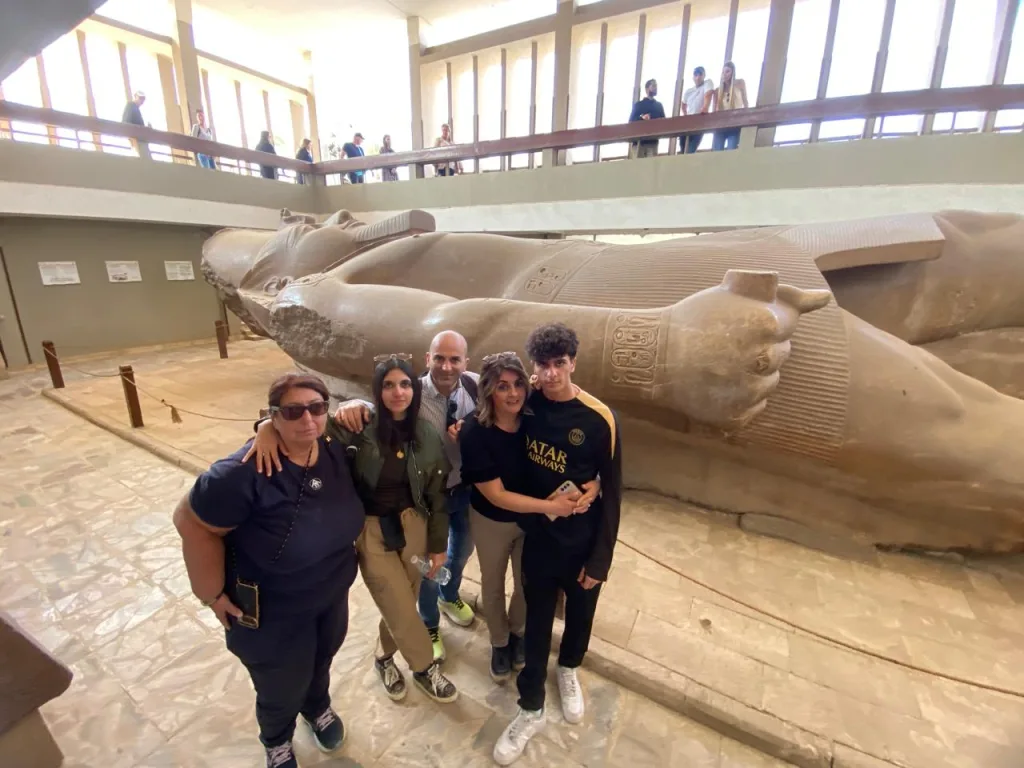
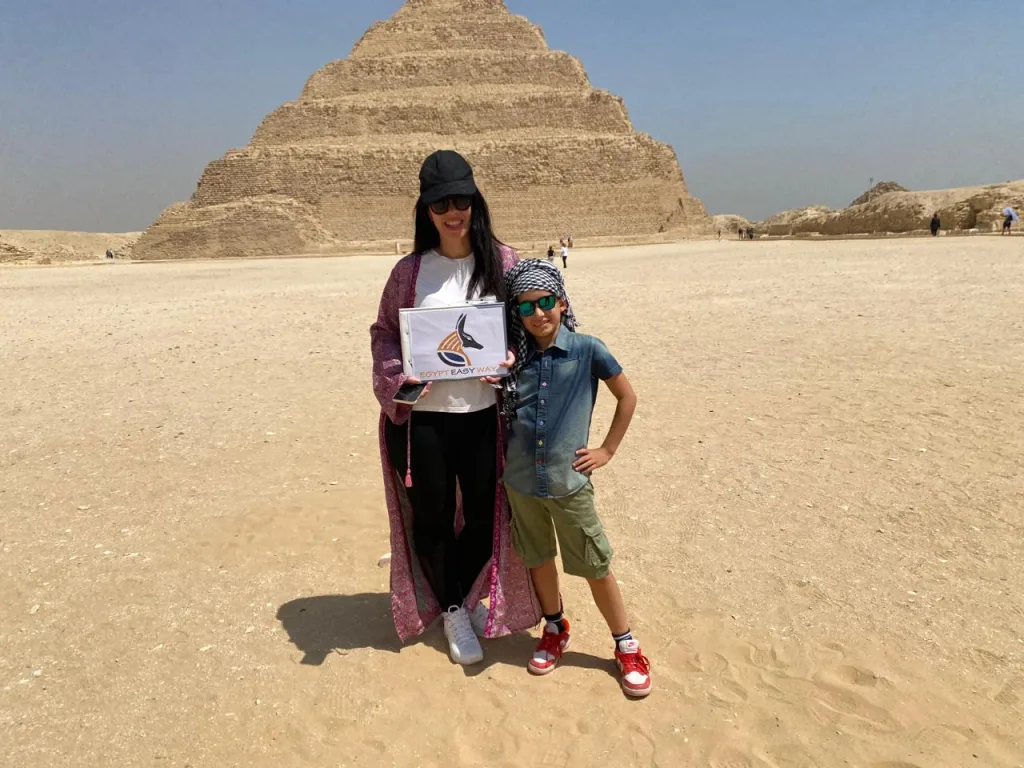
Saqqara is located about 25 km (16 mi) southwest of Cairo. Approached through orchards of waving palm trees, Saqqara is best known for being the site of the earliest stone pyramid constructed in Egypt, the Step Pyramid of Djoser. The site encompasses at least four other pyramid complexes of different dates, countless tombs from all eras of Egyptian history, as well as several animal necropolises, the most notable of which is the Serapeum. Much active archaeological work is being done at Saqqara by both Egyptian and foreign teams. A French team found the rock-cut tomb of Maya, the wet-nurse of Tutankhamun, at the edge of the plateau. This find complements the earlier finds of the tombs of Maya (the treasurer), and Horemheb, all of whom were active during the reign of Tutankhamun.
Saqqara is large, sprawling, and best covered on foot and by car. A suggested route, which will depend somewhat on which tombs are open to the public, is to start at the Step Pyramid complex, which you can walk around. Ask at the ticket booth if the pyramid of Unas is open; if it is, go there next on foot. Then return to the car, drive to the Mastaba of Mereruka (an extra ticket) and the Pyramid of Teti, then drive to the Serapeum(an extra ticket). If you have more time, visit the Tomb of Ti near the Serapeum. There are other mastabas open near the Step Pyramid, like the Mastab of Idut, as well as the Mastaba of Ptahhotep near the Serapeum. See these if you have time, energy, and interest.
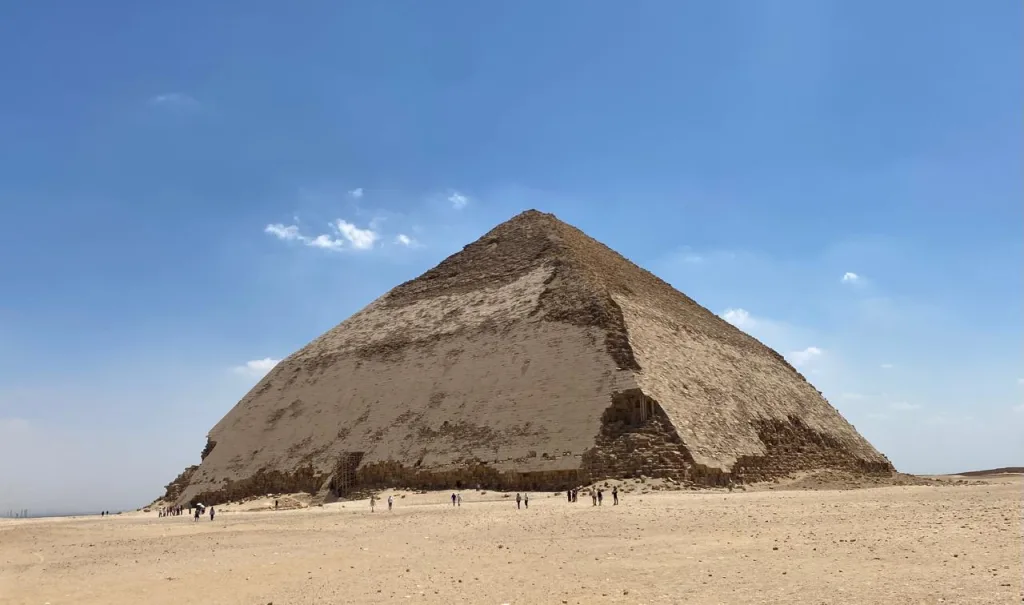
Dahshur is located about 33 km (21 mi) southeast of Cairo.The The
Dahshur Bent Pyramid was opened to the public recently, and it is one of the most tranquil and awe-inspiring pyramid sites. It contains five pyramids dating from the Old and Middle Kingdoms, of which three are obvious; only one can be entered. A suggested itinerary for the site is to drive to the first pyramid on the left of the entrance. After you take it in, drive over to the Bent Pyramid.
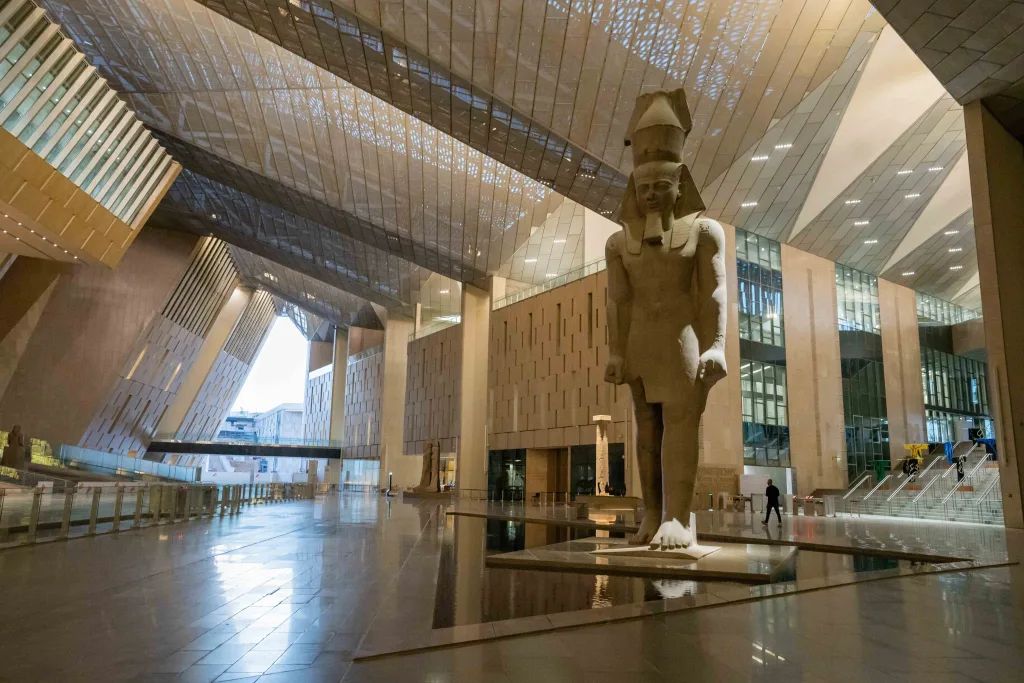
In January 2002, the Egyptian government announced a worldwide competition for the design of a new museum complex to house, display, and preserve some of the world’s greatest ancient treasures, with which the modern country of Egypt has the privilege of being entrusted. The following month, a ceremonial foundation stone was laid at the site selected for the new project, a site only two kilometers away from Egypt’s greatest monuments and the only remaining wonder of the ancient world – the Pyramids of Giza.
In 2003, the winner of the architectural design competition was announced at a press conference in Cairo, with the Irish firm Heneghan Peng Architects securing the contract to turn their ultra-modern concept into the new Grand Egyptian Museum. Construction on the new museum began in earnest in 2005, but setbacks of environmental, financial, and political natures soon beset the ambitious project, and monumental delays ensued.
As the outbreak of the Arab Spring reached Egypt in early 2011, work on the project ground to a halt as the country experienced several years of unfortunate political instability and uncertainty. Tourism to Egypt also declined during these years, depleting the government’s coffers and jeopardizing the future of the grand new museum.
Finally, following the government in 2014 and the preservation of that stability ever since, the project soon got back on track, and construction resumed with the help of international loans to cover the financial shortfalls caused by the lingering effects of the tourism downturn.
When the Grand Egyptian Museum fully opens to the public in November 2025, it will be the largest archaeological museum complex in the world. Furthermore, the GEM Grand Egyptian Museum has more than 100,000 artifacts. For the first time, King Tutankhamun’s entire treasure collection will be on display.
On the other hand, other artifacts from prehistoric times through Egypt’s many thousands of years of pharaonic civilization, through the comparatively more modern ancient Greek and Roman periods of Egyptian history. While the Egyptian government had previously announced that the GEM would open its doors to the general public in 2018 and again in 2019, we cautioned at the time that those opening dates were very likely to change. Now, however, we believe that the mid-2025target is likely to be met.
